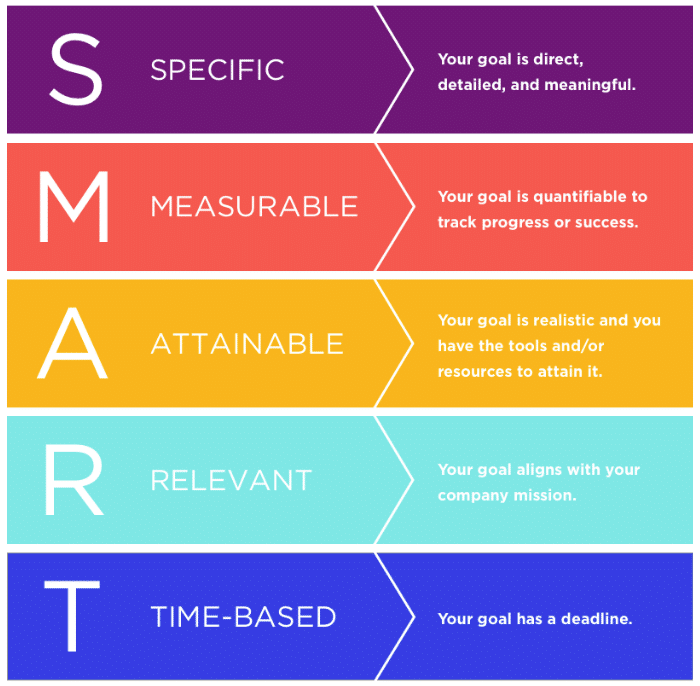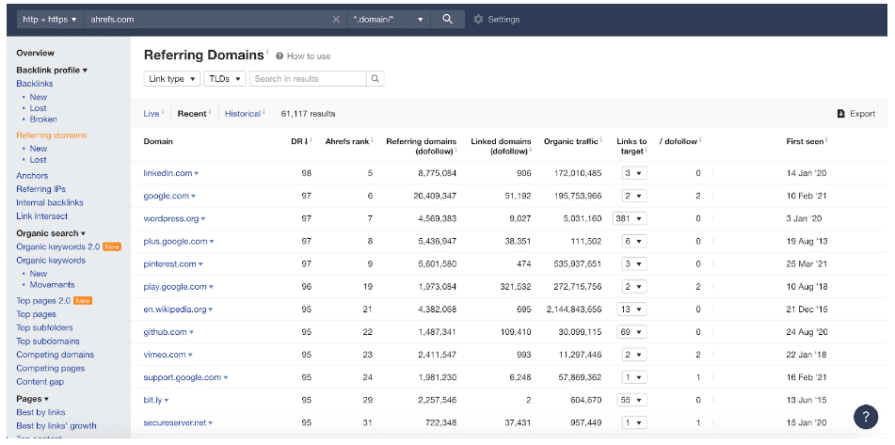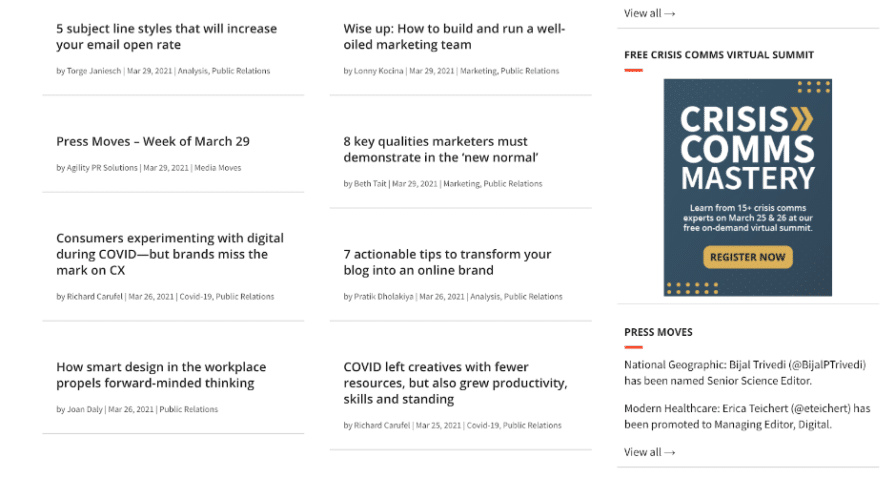Blogger outreach is the process of reaching out to bloggers, often via email, and the primary goal of is generally some form of link building. That could be a guest post request or a link insert request. Blogger outreach is also used to create brand awareness, PR, and lead generation.
Many people find blogger outreach difficult and frustrating. Yet, if you apply the right approach, blogger outreach can help you acquire new leads and push you up the search engine rankings. With that in mind, let’s take a look at what it takes to launch a successful blogger outreach strategy:
1. Project setup
The starting point for any marketing strategy is to set your campaign goals. You need to define your goals for the marketing campaign. I recommend you use the S.M.A.R.T. goals framework. SMART stands for Specific, Measurable, Attainable, Realistic, and Time-bound.
Source: Lister
An example of a SMART goal would be to secure ten link inserts from different domains with a Domain Authority of 40+ in the next 30 days.
That example goal hits each element of the SMART framework.
Accurate goal-setting will keep your team focused on the objectives they are trying to achieve.
Get the right tools
After setting the goals for your blogger outreach campaign, you need to decide what tools you will use. A Google search is an ok starting point when searching for relevant sites for your blogging outreach campaign.
If you want to run a blogger outreach campaign at scale, you will need some additional tools. I recommend investing in the following:
- SEO Tools: You should use a suitable SEO tool to identify relevant sites for outreach. The most popular tools are Moz, Ahrefs, and SEMrush.
- Email Verification Software: You’ll need a tool to collect the email addresses of prospects. The two most well-known email finders are Hunter and Voila Norbert.
- Email Outreach Tools: You can automate your outreach using online software like Mailshake or Buzzstream.
Online tools like the ones listed above will help improve your targeting and speed up your outreach. If you’re operating on a budget, you can probably get by using a paid trial for an SEO tool and using the 50 free email finding credits most of the top email finders provide.
2. Create a database
The next stage of your blogger outreach campaign involves creating a database of sites you want to target. You should start this process by setting out the type of sites you want to target utilizing relevant SEO metrics.
If I were looking to promote my web design agency, for example, I’d target sites that have the following characteristics:
- Niche relevant site
- Domain Rating – 40+
- Traffic – 5,000+ visitors a month
- Trust Flow – 16+
Once you’ve defined the types of sites you want to target, you need to compile your list. The easiest way to build out your database is to review an authority site’s backlink profile. For example, in the SEO niche, I might review the backlink profile of a site like Ahrefs.
The screenshot above reveals the number of referring domains. You can see 61,117 domains linked to Ahrefs.
Export this list of sites to a Google Doc. Remove all of the sites that have a Domain Rating of 39 or less. Then, remove the general sites that are irrelevant to your campaign, such as Youtube, newspapers, etc.
After vetting the list, you’ll end up with a shortlist of sites that you could contact for your blogger outreach campaign. These sites fit the characteristics that you set out earlier.
Contact details
Finally, before launching your blogger outreach campaign, you need to find the editor’s contact details at the sites you want to target. There are a few different ways you can find this information.
The most straightforward approach is to try and find the submission page for a website. You can use the following on Google to find a relevant email address:
- Site:website.com guest post submissions
- Site:website.com editorial guidelines
Replace website.com with the site’s name.
Another way to find the relevant person’s contact information at a website is to review who publishes content on the website blog. If I look at the Agility PR blog’s archive page, I see one name pops up twice.
You can then look up the email address of that person using an email finder.
There are other strategies you can use to find the address of the site manager. For example, with a big company, you can normally use LinkedIn to identify the blog editor. You can then use an email finder to collect their contact information.
Regardless of your approach, you should have a list of relevant sites and the contact information for the relevant contact person at the end of this research phase. Now, you’re ready to launch your blogger outreach campaign.
3. Launching your campaign
Every blogger outreach campaign will have unique goals. The hook that will impact the success rate of your campaign is your outreach email. Craft a great email that resonates with your recipient, and you’ll get a high response rate. The opposite is also true, of course.
Here are two tips for creating an outreach email that generates a positive response:
- Keep it short and sweet: Start by explaining why you are reaching out and what you need.
- Explain the benefit: incentivize a response by providing something of equal value to what you are requesting.
If you’re struggling to come up with your email template, have a quick search on Google. There are lots of online resources that share example templates you can use.
Track your results
It’s important to track and monitor the results of your blogger outreach campaign. You should monitor metrics like your response rate. If you have a low response rate, you might want to change your email outreach template.
Email outreach tools can provide you with a deeper understanding of your campaign. A lot of email outreach tools, for example, can track the open rate of an email. That can provide you with great insights into how people are engaging with your content. For instance, if your email isn’t being opened, you might have a problem with your subject line.
Wrapping up
An effective marketing campaign begins by setting clear objectives. Once you’ve defined your goals, use suitable tools to make a database of sites for outreach. You can then use an email finder to get the relevant person’s contact information at each site. Then, create an engaging email outreach template and launch your campaign.
The success of your blogger outreach campaign will improve with practice. Hopefully, this guide has provided you with a framework you can use to achieve your goals—best of luck.






